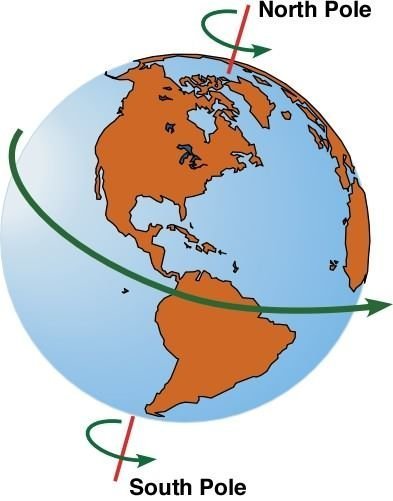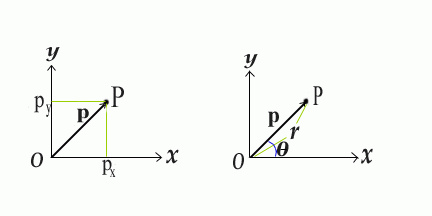Understanding Motion in Physics
Edited by Tosin Emmanuel, Jen Moreau, Sharingknowledge, Chameleon and 1 other
Motion
Motion involves a change in the position of an object over time. Motion influences when objects move and the forces necessary to make them move. Classical mechanics is the branch of physics that studies motion. The study of classical mechanics is quite expansive and includes the study of motion at the nanoscale and microscopic level (protein folding, enzymes) macroscopic level, all the way to the motion of aviation crafts, planets and satellites in the solar system. Most of our laws concerning motion and relativity come from the works of Sir Isaac Newton and Albert Einstein.
Laws of Motion
Newton's law of motion is the foundation for Classical Mechanics. These describe the basics of force and its application to motion and include:
- 1Every object will remain at rest or will move undeviating in a constant straight line unless it is impacted by an external force. This is also known as inertia. If there is no net force operating on any object, the object will maintain a constant velocity[1]. For example, during a hockey game, the puck will continue in a straight line (inertia) at the same speed (velocity) unless or until an external force (another player, the goal post, snow built up on the ice) applies force to the puck. Once force is applied (the puck hits the post, another player hits the puck, the puck slides over the snow), the direction and the speed of the puck will change.First Law.Advertisement
- 2The speed or velocity of an object is modified when the object encounters external force. The forces is equal to the change in momentum (mass times velocity) per the change in time. [2]. The more mass the object has, the greater the force that is needed to change velocity. Mathematically, where force is F, mass is m and acceleration is a:Second Law.
F=m*a For example, if force was applied to a cement truck and the same force was applied to a Smart Car, the momentum of the Smart Car would be greater than the momentum of the cement truck because the Smart Car has a lesser mass.
Studies of Motion
In Classical Mechanics, there are two fields of studying motion. Given Newton's laws of motion, it is understandable that these two fields would be divided by the main effect on motion and velocity: force.
- 1Kinematics is the study of the movement or motion of objects and groups of objects without considering the mass of the objects or the forces interacting with the object. Kinematics is concerned with the study of acceleration and velocity rather than force. An example of kinematics is studying the maximum height a ball will reach when thrown in the air.Kinematics.
- 2Conversely, dynamics is the study of movement or motion of an object or group of objects with consideration of the mass of the object and the forces interacting with the object. An example of dynamics is throwing a ball 6 feet in the area and studying the force needed to attain this height.Dynamics.
Types of Motion
Depending on the mass of an object, the force applied, the velocity and momentum, objects move in various patterns of motion. There are five patterns studied in Classical Mechanics.
- 1
- 2
- 3
- 4Oscillatory motion involves an object moves back and forth reversing the direction of its motion and returning regularly to its original position. Examples are the motion of a pendulum bob, the strings of a guitar, the prongs of a tuning fork struck with a hard object, vertical movement of a distributed mass on a spiral spring.Oscillatory motion.
- 5Relative motion occurs when one object is at rest but perceives motion when looking at an object that is moving. For example, when traveling in a moving bus, if you look out the window at unmoving objects (i.e. houses, parked cars, fence posts) those objects appear to be moving backward or behind you. In this example, the bus is moving relative to the objects outside. Though the objects outside the bus are unmoving, they appear to be moving. Figure 5 Relative motion of a stationary house with respect to a passenger in a trail.Relative motion.
Motion Representation
A motion is usually represented in space and direction at a particular point in time or time interval. However, this representation is dependent on position, distant and displacement. The position of a point in space is determined by its distance and direction from another point. The position of an object is determined with respect to a standard or known position usually referred to as reference point. To determine the position of an object in a plane, it is required to draw two lines intersecting each other and perpendicular to each other. The horizontal line going across from left to right of the plane is called the x or abscissa axis and the vertical line is called they or ordinate axis.
Point O to the left is negative in the x-axis while to the right, it is positive in the x-axis. Points above the origin O is positive in the y-axis while points below the origin O is negative in the y-axis. Therefore, the position of any point is determined by the coordinate which is the x-y coordinate. In advance studies, the position of an object in space is usually represented using the x, y and z-axis thus, it is evaluated using the circular coordinate or the spherical coordinate. In the study of motion, it is necessary to specify the direction in which a body is moving. Displacement is defined as the distance traveled in a specified direction. Imagine a person walking 600 meters east and then walking back 400 meters to the west, the total displacement, in this case, is 200m. The person is now 200m from the starting point.
Distance Time Graph
When the distance of a moving object is measured at known time intervals the value of distance on the y-axis and the time interval on the x-axis can be plotted on a graph. When these points are joined, a distance/displacement time graph is created.
The distance/displacement time graph is used to determine various parameters of motion like the starting point, end point, velocity of the object the time the object achieves a certain speed.
Referencing this Article
If you need to reference this article in your work, you can copy-paste the following depending on your required format:
APA (American Psychological Association)
Understanding Motion in Physics. (2020). In ScienceAid. Retrieved Apr 20, 2024, from https://scienceaid.net/Understanding_Motion_in_Physics
MLA (Modern Language Association) "Understanding Motion in Physics." ScienceAid, scienceaid.net/Understanding_Motion_in_Physics Accessed 20 Apr 2024.
Chicago / Turabian ScienceAid.net. "Understanding Motion in Physics." Accessed Apr 20, 2024. https://scienceaid.net/Understanding_Motion_in_Physics.
If you have problems with any of the steps in this article, please ask a question for more help, or post in the comments section below.
Comments
Article Info
Categories : Physics
Recent edits by: Chameleon, Sharingknowledge, Jen Moreau


















